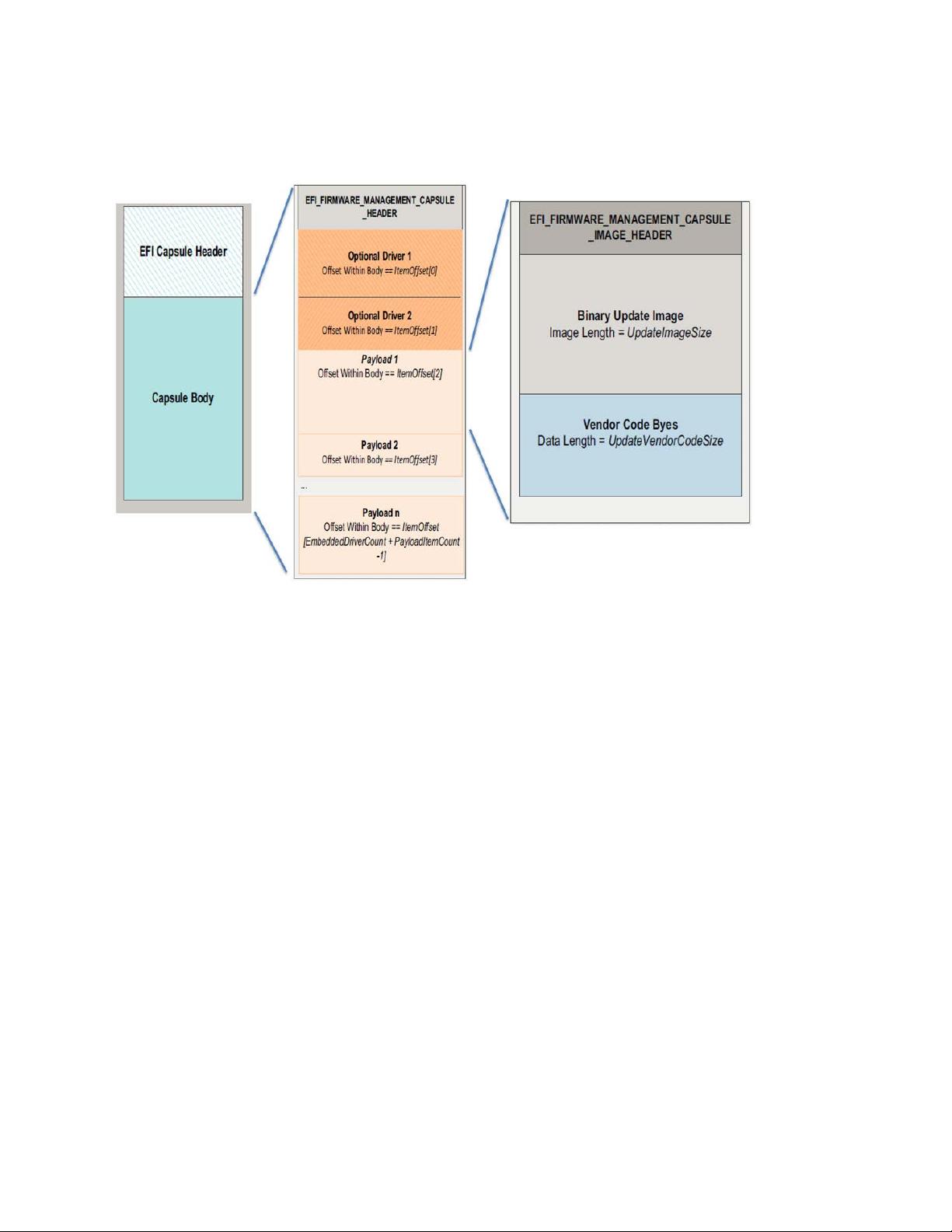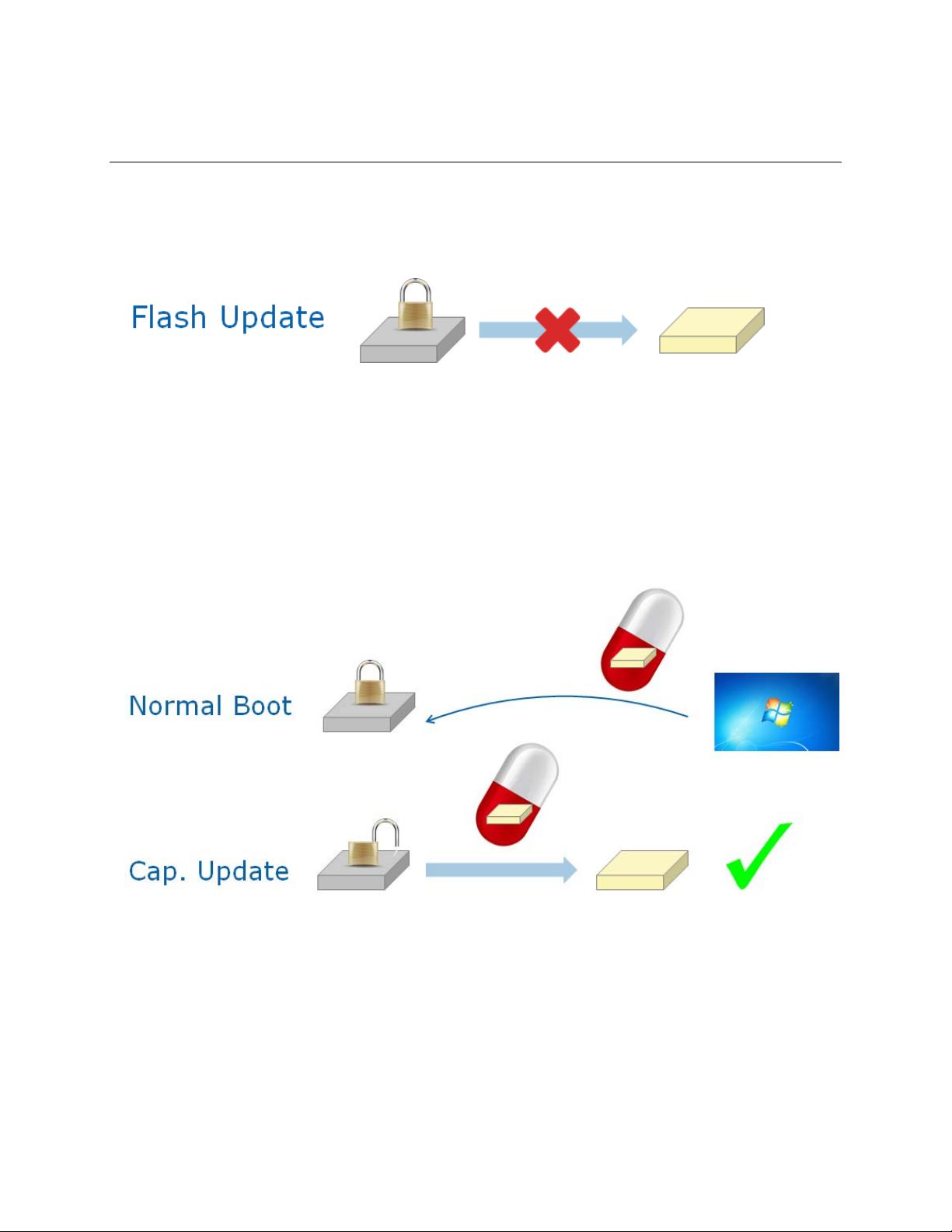BIOS固件更新指南:胶囊升级与EDK II中的恢复
需积分: 33 156 浏览量
更新于2024-07-19
收藏 932KB PDF 举报
本白皮书《BIOS胶囊更新指南》详细探讨了在EDK II(Unified Extensible Firmware Interface)环境中实施BIOS胶囊更新与恢复的技术。BIOS(Basic Input/Output System)是计算机启动时运行的第一阶段固件,它负责初始化硬件、加载操作系统和其他关键设置。随着技术的进步,传统的BIOS升级已不能满足现代设备对安全性和可管理性的需求,因此引入了胶囊更新的概念。
胶囊更新是一种创新的BIOS升级方式,它将必要的固件代码封装成小型、独立的更新单元,可以简化部署过程并降低风险。相比于传统的BIOS刷新,胶囊更新具有以下特点:
1. **模块化**:胶囊更新允许只升级特定功能或修复,减少了整体更新的复杂性和可能导致的系统不稳定问题。
2. **安全性增强**:通过分隔核心BIOS代码和用户自定义代码,降低恶意软件攻击的风险,同时便于隔离和修复潜在漏洞。
3. **快速恢复**:如果胶囊更新失败,系统通常能够回滚到先前的稳定状态,减少维护时间。
4. **管理可控**:企业可以通过统一的管理平台控制BIOS更新流程,提高IT管理效率。
5. **适应性**:EDK II架构支持灵活的更新机制,适应不同厂商和平台的兼容性。
白皮书详细介绍了如何在EDK II环境中设计和实现胶囊更新功能,包括构建胶囊、集成到UEFI固件、验证流程以及安全措施。此外,它还涵盖了胶囊更新的测试方法、潜在挑战以及最佳实践,以确保更新过程的顺利进行。
值得注意的是,本文档仅供信息参考,不保证任何商业适用性,也不构成对任何特定用途的保证。Intel公司对其提供的信息不承担任何责任,包括但不限于对版权、商标或专利权的侵犯。在使用本规格中的信息时,请确保遵守所有适用法律和Intel的知识产权政策。
《BIOS胶囊更新白皮书》是一份实用的指南,对于理解和优化BIOS固件管理,特别是在追求安全、稳定和可扩展性的现代计算环境中,具有重要的参考价值。
1474 浏览量
2660 浏览量
167 浏览量
2021-03-06 上传
2018-04-15 上传
2021-03-19 上传
101 浏览量
2021-05-02 上传
tangtianyi060827
- 粉丝: 1
最新资源
- Visual Studio (VC) 快捷键大全
- 基于FPGA的32Kbps CVSD语音编解码器实现
- 基于FPGA的32Kbit/s CVSD语音编解码器实现
- Axis2:提升Web服务开发效率
- Oracle数据库常见问题与解答
- Oracle游标深入解析与应用
- Oracle 9i闪回技术:数据删除后恢复策略
- Dojo框架实战教程:Ajax应用开发必备
- A Byte of Python:简明Python编程教程
- 赵炯深度解读:0.11版Linux内核注释详解
- ModelMaker5设计模式中文版详解:简化实例制作
- 遗传优化全结构径向基概率神经网络
- Object Pascal编程指南:集成开发环境与程序组织
- 《玩转Windows》全攻略:从DOS到XP的操作系统宝典
- IP反向追踪技术在对抗DoS攻击中的应用与分析
- Windows XP下安装与使用Cygwin/X指南










